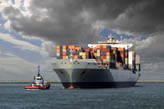Understanding Local Customs and Fees in Sea freight
When planning international shipping, understanding local customs and fees is crucial for ensuring smooth operations and cost efficiency. Sea freight, or sea shipping, refers to the transportation of goods by sea, which is a popular and reliable method for businesses worldwide. However, it’s essential to be aware of the additional costs that may arise due to local regulations, taxes, and customs procedures.
One of the primary factors affecting sea freight costs is the volume and weight of the cargo. Heavier or bulkier goods may incur higher transportation fees. Additionally, understanding local customs and documentation requirements is vital, as failing to comply with customs regulations can lead to delays, additional costs, or even legal issues.
To minimize costs, it’s advisable to compare quotes from multiple shipping companies, evaluate different packaging options, and explore any available discounts or preferential rates. Moreover, staying informed about seasonal fluctuations in shipping costs and demand can help in securing more competitive rates.
In conclusion, understanding local customs and fees is essential for optimizing sea freight costs. By carefully evaluating factors such as cargo volume, weight, and compliance with regulations, businesses can ensure efficient and cost-effective transportation of their goods.
